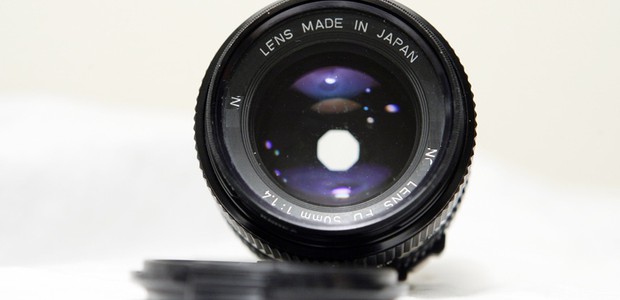6 Tips for Buying a Camera Lens

Buying a camera lens
Are you in the market for a new camera lens, but are feeling a little fuzzy on what details matter most in a lens? Don't worry—here are 6 tips meant to help focus your search.
1. Think about what you want to photograph
First and foremost when choosing what camera lens to buy, consider what you usually like to photograph. Do you like taking landscapes and travel photos? A lens that lets you capture a wide view might be the way to go. Are you going on safari? Or photographing sports events? A lens that lets you zoom way in will be the one for you. If you're interested in shooting portraits and events, a normal lens will be a great option. What do we mean when we say a “normal lens?” We don't mean there are normal and weird lenses out there—what we're referring to is the type of lens.
2. Know what type of lens you need
To get a better understanding of different focal lengths and the different types of camera lenses available, check out our companion article, Understanding the Different Types of Camera Lenses.
3. Decide what you want your aperture to be
Inside every lens is something called the aperture—this is just another word for “hole.” This hole can be made larger or smaller, letting in more or less light. A camera lens with a larger aperture will perform much better in darker lighting conditions, since you can make the hole bigger to let in the most light possible. Aperture is measured in “f-stops”--just like we measure weight in pounds, or length in inches. Anytime you hear a photographer talk about things like “f/8” or “f/5.6,” they are describing the size of the aperture in their lens. Every lens is described by its largest aperture. This might be something like f/3.5 or f/2. The lowest apertures are usually f/1.4, f/1.8, or f/2. If you know you will be photographing in low-light conditions—for example, at night, at indoor events, and other darkly-lit situations—you should look for a lens with these low f-stops.
4. Find out what options are compatible with your camera
Next, surf around on the web and find out what types of lens options are available for your camera. Usually, camera manufacturers also make lenses to go with their cameras. Whether you're shooting with a Canon or a Nikon, Fuji or Sony, there will be lenses made to work specifically with your camera.
5. Read reviews
Once you've narrowed your options down, it's a good idea to read some reviews of the lenses you're considering. There are many sites online that provide in-depth reviews. You should pay close attention to things like how the lens works in low-light situations, how sharp images shot with the lens are, how quickly and how well the lens can focus, and how bulky or lightweight the lens is. Lookout for lenses that seem to have consistent problems—for instance, you may find that a certain lens has a defect that affects its autofocus capability.
6. Try it out in person
Finally, as when buying a new camera, we recommend visiting your local camera or electronics store and testing out the camera lens in person. Once you've narrowed it down to one or two different lenses, head to store and see if the lens meets your expectations. While you're there, think about the weight and size of the lens, how it feels in your hands, and whether it works well with your camera.
If you keep these 6 tips in mind while shopping for a new camera lens, you'll soon be snapping photos with a smile!
Comments
Sign in to comment.